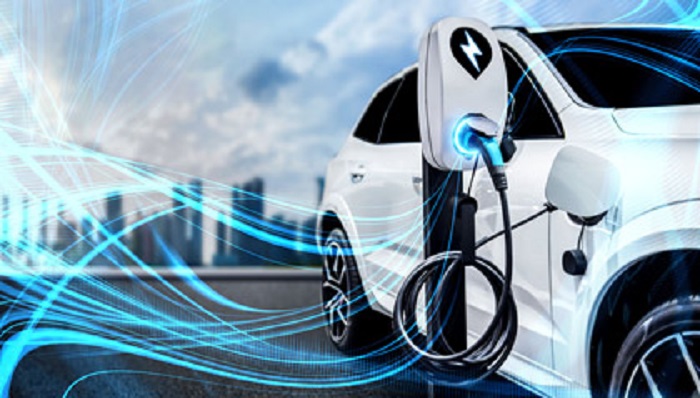The Growth of Electric Vehicles: Factors Driving Adoption

Freya Parker . Follow
2 months ago

The automotive industry is undergoing a significant transformation, with electric vehicles (EVs) taking center stage. The shift from traditional internal combustion engines to electric-powered vehicles is driven by various factors, including environmental concerns, technological advancements, and government policies. This blog post will explore the key factors driving the adoption of electric vehicles, the challenges associated with this transition, and the potential future of the EV market.
Environmental Concerns
One of the primary factors driving the adoption of electric vehicles is the growing awareness of environmental issues. Traditional gasoline and diesel-powered vehicles contribute significantly to air pollution and greenhouse gas emissions. As concerns about climate change intensify, there is increasing pressure on governments, industries, and consumers to reduce their carbon footprint. Electric vehicles, which produce zero tailpipe emissions, offer a cleaner and more sustainable alternative to conventional vehicles. The shift towards EVs is seen as a critical step in reducing global carbon emissions and mitigating the impact of climate change.
In addition to reducing air pollution, electric vehicles also contribute to lower noise pollution, particularly in urban areas. The quiet operation of EVs is a stark contrast to the loud engines of traditional vehicles, making cities and neighborhoods quieter and more peaceful. This aspect of EVs has garnered attention as urbanization continues to increase, and the need for more livable and sustainable cities becomes more pressing.
Technological Advancements
The rapid advancements in technology have played a crucial role in the growth of electric vehicles. Improvements in battery technology, in particular, have led to significant increases in the range and efficiency of EVs. Lithium-ion batteries, which are commonly used in electric vehicles, have become more affordable and capable of storing more energy, allowing EVs to travel longer distances on a single charge. This has addressed one of the main concerns of potential EV buyers: range anxiety.
In addition to battery technology, advancements in electric motors, regenerative braking systems, and charging infrastructure have also contributed to the growing adoption of EVs. Modern electric vehicles are now equipped with powerful and efficient motors that provide a smooth and responsive driving experience. Regenerative braking systems allow EVs to recover energy during braking, further enhancing their efficiency. Moreover, the expansion of charging networks, including fast-charging stations, has made it more convenient for EV owners to recharge their vehicles, reducing the time required for long-distance travel.
Government Policies and Incentives
Government policies and incentives have been instrumental in promoting the adoption of electric vehicles. Many governments around the world have implemented regulations aimed at reducing carbon emissions and encouraging the use of cleaner transportation options. These regulations often include stricter emissions standards for conventional vehicles, which have prompted automakers to invest in electric vehicle technology.
In addition to regulatory measures, governments have also introduced various incentives to make electric vehicles more accessible and affordable for consumers. These incentives may include tax credits, rebates, and grants for EV purchases, as well as exemptions from tolls, parking fees, and congestion charges. By reducing the upfront cost of EVs and providing financial benefits, these incentives have made electric vehicles more attractive to a broader range of consumers.
Furthermore, some governments have set ambitious targets for phasing out the sale of new internal combustion engine vehicles, with the goal of transitioning entirely to electric vehicles by a certain date. These targets have created a sense of urgency for automakers and consumers alike, accelerating the shift towards electric vehicles.
Impact on the Vehicle Recycling and Salvage Industry
The rise of electric vehicles is also having a significant impact on the vehicle recycling and salvage industry. As more EVs enter the market, there is a growing need for specialized recycling processes to handle the unique components of these vehicles, particularly the batteries. Companies like Cash For Cars NSW in Sydney are adapting to these changes by developing new methods for recycling EV components in an environmentally responsible manner.
This shift is not only essential for reducing the environmental impact of end-of-life vehicles but also presents new opportunities for businesses within the recycling and salvage industry. The cash for broken cars Sydney represents the growing demand for services that can handle both traditional and electric vehicles, ensuring that valuable materials are recovered and reused rather than ending up in landfills.
Consumer Awareness and Preferences
As electric vehicles become more mainstream, consumer awareness and preferences are also shifting in favor of EVs. The growing availability of electric vehicle models, including electric SUVs, trucks, and luxury vehicles, has broadened the appeal of EVs to a wider audience. Consumers are increasingly recognizing the benefits of electric vehicles, such as lower operating costs, reduced maintenance, and the ability to charge at home.
In addition to these practical benefits, many consumers are also motivated by the desire to make a positive impact on the environment. Owning an electric vehicle is seen as a way to contribute to sustainability and reduce one’s carbon footprint. As a result, environmentally conscious consumers are more likely to choose electric vehicles over traditional gasoline-powered cars.
Also visit: https://cashforcarsnsw.com.au/where-to-sell-my-old-car/
Challenges to Adoption
Despite the numerous factors driving the adoption of electric vehicles, there are still challenges that need to be addressed. One of the main challenges is the availability and accessibility of charging infrastructure. While charging networks have expanded significantly in recent years, there are still areas, particularly in rural regions, where charging stations are scarce. This can deter potential EV buyers who are concerned about the convenience of charging their vehicles.
Another challenge is the cost of electric vehicles, which, despite government incentives, can still be higher than that of conventional vehicles. The initial purchase price of an electric vehicle is often a significant consideration for consumers, particularly for those on a budget. However, as battery technology continues to improve and production costs decrease, the price gap between electric and traditional vehicles is expected to narrow.
Finally, concerns about battery life and disposal also pose challenges to the widespread adoption of electric vehicles. While modern lithium-ion batteries have a relatively long lifespan, they will eventually need to be replaced, and the disposal of old batteries raises environmental and safety concerns. The development of recycling and repurposing methods for used EV batteries is an ongoing area of research and is critical to ensuring the sustainability of electric vehicles.
Conclusion
The growth of electric vehicles is being driven by a combination of environmental concerns, technological advancements, government policies, and changing consumer preferences. While challenges remain, the future of the EV market looks promising, with continued innovation and investment expected to address these obstacles. As electric vehicles become more affordable, convenient, and accessible, their adoption is likely to accelerate, contributing to a more sustainable and environmentally friendly transportation system. The transition to electric vehicles represents a significant step forward in reducing global carbon emissions and building a cleaner, greener future for all.
Find more insightful blogs here.
Recommended topics
Recommended from Guest Post

Rahul Nagar


